Join us as we kick off the second full day of the ninth annual Best Practices for Oil & Gas conference and explore some of the trends and topics of interest for the industry.
SAP Industry Innovation Awards
Join us as we recognize the achievements of oil and gas organizations that purposefully use technology to transform their business, employees, and communities. Awards presented will include: Pioneer of the Year, Excellence in Business Optimization, and the Purpose Driven Award.
Opening Remarks
Join us as we kick off the ninth annual Best Practices for Oil & Gas conference and explore some of the trends and topics of interest for the industry.
Devon Energy’s Unconventional Sprint to Get SAP to Microsoft Azure
Devon Energy in partnership with Microsoft and SAP pioneered the journey to migrate 125 SAP application and database servers to Microsoft Azure successfully within a five-month timeline and a 72-hour window for go-live. The effort entailed designing and building an infrastructure for network, storage, and application management that met the technical and business requirements to leverage the scalability and elasticity of the tools that Microsoft and SAP have to offer.
The 6-terabyte ERP central component (ECC) system required an SAP HANA large instance to support the database, additional servers to support internet protocol (IP) table configuration for network connectivity, and building app servers on physical hardware versus virtual machines (VMs) to resolve performance issues found two weeks before go live.
App servers were built on Red Hat Enterprise Linux (RHEL) 7.5 to allow for high-availability clustering in the future. High-availability (HA) and disaster recover (DR) solutions were only implemented for the database servers and have been tested with automated scripts. All SAP servers built on VMs were automated using Puppet. During and after the implementation of the re-platform to Microsoft Azure, the monitoring, backup recovery, HA, and DR capabilities were optimized for higher performance, reliability, and stability.
Key Business Benefits:
- Infrastructure scalability
- Reduced hardware costs
- Increased speed
How ConocoPhillips Is Preparing for Next-Generation ERP
ConocoPhillips first implemented its ERP over 20 years ago and has recently started working on a next-generation ERP program and defining what the future state will look like for the business. To prepare for the upcoming migration, the program team has been responsible for four to five projects that will allow for tidying and getting things into place beforehand and prepare for a smooth transition. ConocoPhillips is working on projects such as defining its strategic approach, establishing capability solution boards for governance, establishing ERP data quality and data management, and shrinking its current core system to support a more streamlined process for implementation. In addition, this organization is committed to the SAP upstream oil and gas cloud consortium and is excited to be part of influencing the future of ERP upstream within the industry.
Key Business Benefits:
- Establishing the strategy and governance early provides a strong foundation for making critical decisions and for managing change in the business.
- Implementing ERP data quality and management will provide data standards and processes that will ensure consistent data definitions, effective data management, and support efficient analytics across the business.
- Shrinking the core system will reduce the amount of custom code attached to our current SAP environment, which creates additional complexity and work for ongoing support and upgrades. “Clearing away the clutter” will streamline the amount of work required when we migrate to our future ERP system.
Data-Driven Transformation Using SAP Master Data Governance for EAM
Flowserve is a $15 billion American, multinational supplier of industrial and environmental machinery to the power, oil and gas, chemical, and process industries. In 2017, Flowserve embarked on the Flowserve 2.0 Transformation Program, intending to reshape the company into a single, global operating entity from a complex network of disparate systems. Flowserve chose the SAP Master Data Governance platform to standardize master data, working with Utopia to deploy on supplier, customer, and material domains. Flowserve expects to go from 38 million materials across more than 100 disparate systems with over 500,000 new items being created per year, to only a few million material items and less than 100,000 being created per year. In supply chain, Flowserve is projecting over $100 million in centralized procurement savings and two to three times that amount in inventory efficiencies.
Key Business Benefits:
- Save money on centralized procurement savings.
- Find significant inventory efficiency savings.
- Maintain a single source of truth with transparency across the company.
Aligning Maintenance and Operations for Organizational Performance at PBF Refining
In today’s refinery, operations and maintenance personnel must work closely together to comply with regulations, identify problems early, and maintain equipment in the most effective way possible. At the PBF refinery in Chalmette, Louisiana, technology and process have been blended together in a very creative way.
The solution applied at Chalmette centers around solving these five basic historical problems: First, getting high-quality and detailed work orders from every operator. Second, complying with a myriad of regulations. Third, ensuring the right response from maintenance, utilizing risk-based prioritization. Fourth, emphasizing the solving of small problems before they propagate. Fifth, getting better troubleshooting from the operators on equipment issues.
To tackle these issues, an intelligent “front end” has been applied to SAP. The intuitive system enables quality work orders through a series of configurable questions and responses that are linked to the equipment and maintenance activity type required. The operator is guided through troubleshooting and specific compliance protocols around safety and environmental issues based on site needs. Priority is then set by a risk matrix.
Key Business Benefits:
- Increase in SAP utilization by 300%
- Better compliance to site-specific safety and environmental protocols
- High-quality work orders into SAP with enhanced troubleshooting
Utilizing SAP Analytics Cloud to Provide Insight to Manage Drilling and Completions CapEx
Efficiently managing drilling and completions capital expenditures (CapEx) is one of the most critical business and operational capabilities required in today’s hydrocarbons price environment. Many of our clients struggle to bring in data from SAP and disparate upstream solutions such as WellView and Enersight to provide a single operational and financial view. When comparing capital outlay forecasts against actual spend, the process requires tedious, repetitive, and manual queries out of custom spreadsheets and data warehouses. Energy companies have limited and imprecise visibility to the future because of the translatability of complex operational projections to corporate financial planning such as frack stages completed to total capital costs, rig move days to intangible drilling costs, etc. In this session, we will show you how Marathon Oil integrated data from these sources into a single tool utilizing SAP Analytics Cloud to demonstrate data consistency, transparency, and actionable insights.
Key Business Benefits:
- Improve capital management and discipline.
- Optimize activity planning.
- Align understanding between frontline operations and corporate planning.
Maintenance Operations Ease of Use with SAPUI5 and SAP Fiori, Online and Offline
Noble has developed a comprehensive SAPUI5 and SAP Fiori solution with extensive offline functionality that enables plant maintenance execution on drilling ships.
The applications cover the following SAP Plant Maintenance functionality:
- Maintenance notifications
- Creation/edit
- Activity types
- Header
- Create work order with reference
- Work order execution
- Functional location search
- Link to the associated notification and make changes there
- Add objects (equipment)
- Add operations
- Add components
- Add permits (permit to work)
- Add measuring points
- Add operations
- Add components
- Permit management
- Round manager
- Inspections
- Plant master data search
- Material master data search
- Global synchronization
The solution is deployed as a hybrid application running on an iPad-leveraging single sign-on through the SAP portal. No upgrades were necessary, and the backend system was not upgraded to a SAP HANA database to facilitate this effort. All backend calls were handled by executing AJAX calls directly to the ABAP without using OData services.
Key Business Benefits:
- Ease of use for global maintenance and operations teams
- Offline capability for offshore vessels
- Development and support of product reduces costs on technical teams
Does Your SAP S/4HANA Migration Program Carry the Genetic Markers of Project Disaster?
Oil and gas companies were early adopters of SAP. But while many suffered the speed bumps of early ERP implementations, it’s been a generation since most of these companies have undergone a major transformation project. The current state of the market suggests that some carry the project genetic markers that make them highly susceptible to disaster. The good news is these companies can learn and derive benefits from our research on the wave of catastrophic IT project failures from the past eight years.
Start planning and implementing a successful program by first understanding why major transformational programs fail, what contributed to some poor decision-making, and what steps can be proactively taken to mitigate risks.
This presentation will address:
- Case studies of recent project failures, what went wrong, and what they have in common
- The one thing to get right before embarking on an SAP S/4HANA transformation
- Four early decisions that set the stage of success or failure
- Three practices to improve the quality of project decision-making
Typically, when companies take on big projects, they tend to throw in a flat rate of contingency, like 15%. The appropriate level of contingency for a big ERP transformation program is actually far higher, like 30%. This is often hard to justify to an executive team in the planning phase, but we will show methods to justify this higher contingency.
When contingencies get set too low, project teams typically take shortcuts in order to make their budget. As a result, they’ll not execute on activities that might have been expected. For example, a team that only tests twice to save money instead of three times as planned will likely have more problems as a result of skipping the third test.
Increase the probability of the achievement of anticipated program benefits: Those shortcuts taken to go-live early could limit anticipated program benefits. When capabilities in the system were left out and training to go-live was omitted as a result of the budget, we will show how this shortcutting affected a project’s benefits.
Key Business Benefits:
- Optimize contingency plans for ERP transformation.
- Improve testing to achieve the technology transition possible.
- Gain the best project possible, achieving optimal ROI.

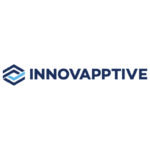
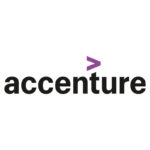
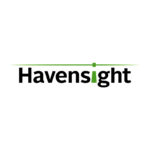

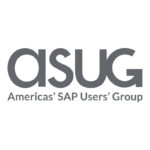
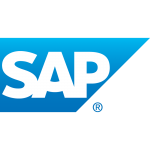
Recent Comments